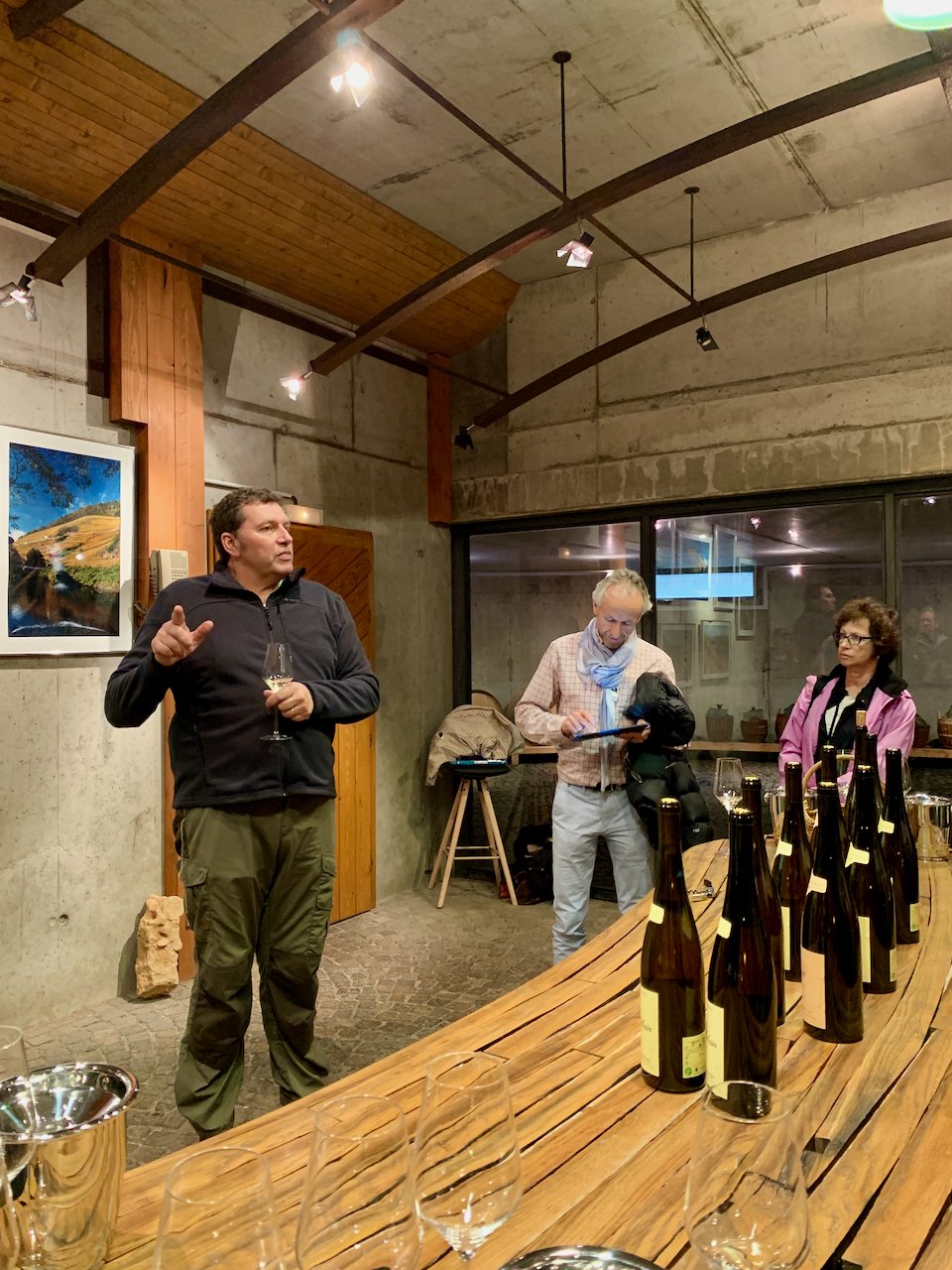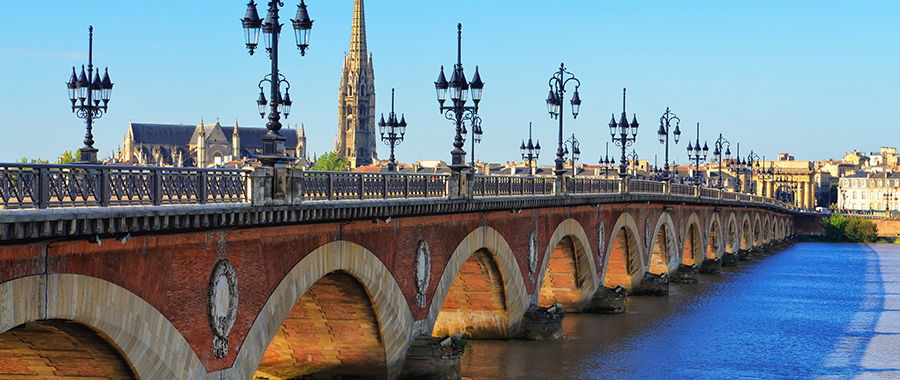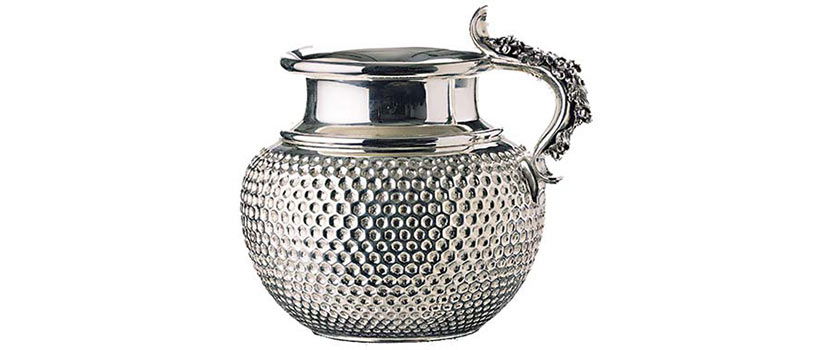BLOG
10 Ways WSG Study Tours Have Changed My Wine Life
Albert Sheen Wine Culture

Curious about Wine Scholar Guild trips, dear reader? I’m no expert on wine tourism, but I have been fortunate enough to go on five (!) WSG trips: Alsace, Champagne, Languedoc-Roussillon, Loire, and Rhône. Below I share my thoughts on why these trips were so great and why I keep coming back for more.
1. Excellent Introduction to Wine Regions
Are you just starting out on your wine education journey? Or are you a seasoned sommelier or advanced wine student, looking to supplement your experience and book learning with first-hand knowledge? Look no further!
WSG trips are designed to provide broad introductions to specific wine regions. You’ll learn about the geology, climate, history, and culture of each wine region, and how these factors influence the styles of wine produced today.
For regions with few appellations d’origine controllée such as Champagne and Alsace, you’ll quickly learn their regional characteristics and start to make sub-regional distinctions. For larger regions with many AOCs such as the Loire, the Rhône Valley, and Languedoc-Roussillon, the trips focus on standout AOCs that will give you a sound starting point for understanding the regions as a whole. For example:
- Loire AOCs: Sancerre, Vouvray, Chinon, Bourgeuil, Saumur, Savennières, Muscadet
- Rhone AOCs: Côte-Rôtie, Condrieu, Hermitage, Gigondas, Tavel, Lirac, Châteauneuf-du-Pape
- Languedoc-Roussillon AOCs: Pic Saint Loup, Faugères, Saint-Chinian, Corbières, Maury, Banyuls, Picpoul de Pinet
You’ll also visit a range of producers—large négociants, individual grower-producers, and cooperatives—to get a full picture of the wine industry in a particular region.

The group exploring Gigondas' vineyards, courtesy of Albert Sheen
2. Deep Dives into Specific Appellations
Along with learning about regional characteristics, you’ll also get to drill down into some of the most famous AOCs in France.
In Champagne, for example, you’ll learn to distinguish wines coming from the Montagne de Reims, Côte des Blancs, Vallée de la Marne, and Côte des Bar. In Alsace, you’ll learn about the major villages and their grand crus: Colmar, Eguisheim, Kaysersberg, Ribeauvillé, Riquewihr, etc.
In Roussillon, we visited two producers in Banyuls, overlooking the Mediterranean and at the very edge of France itself. Also, in the Loire, we visited three producers in Sancerre, and two each in Vouvray, Savennières, and Muscadet-Sèvre-et-Maine. And finally, in the Rhône, we visited two producers each in Côte-Rôtie, Condrieu, Hermitage, and Châteauneuf-du-Pape.
Visiting multiple producers in an AOC (1) helps flesh out how its varied terroirs contribute to different wine styles, (2) gives invaluable insight into individual producers’ farming and winemaking philosophies, and how they navigate AOC rules; (3) allows you to compare styles and begin to understand the diversity within each AOC.

Côte Rôtie, courtesy of Albert Sheen
3. VIP Access to Iconic Producers
We all know the labels and names of world-famous wines, but how often do we get the chance to meet the winemakers in the flesh, getting to know their personalities, ideas, and methods? The WSG does an excellent job of curating visits to both iconic and under-the-radar producers, such as:
- Alsace: Weinbach, Zind-Humbrecht, Albert Boxler, Albert Mann, Schoffit, Meyer-Fonné, Leon Beyer, Paul Blanck
- Champagne: Drappier, Ruinart, Vilmart, Pierre Péters, Piper-Heidseick, Louis Roederer, Phillipponat, Krug, Dom Pérignon, Bollinger
- Languedoc-Roussillon: Domaine de Cebène, Mas Champart, Coume del Mas, Mas Amiel, Mas de Daumas Gassac, Domaine de l’Hortus
- Loire: Gérard Boulay, Domaine Huet, Vincent Carème, Bernard Baudry, Domaine Guiberteau, Coulée de Serrant, Domaine aux Moines, Domaine de la Chevalerie, Domaine de la Pépière, Domaine Luneau-Papin
- Rhône: E. Guigal, Stéphane Ogier, Yves Cuilleron, M. Chapoutier, Château de Saint-Cosme, Château la Nerthe, Château de Beaucastel
On many of these visits, the producers really roll out the red carpet: you’ll walk the vineyards, tour their cellars, and then taste through their entire lineup of wines. For a non-industry person like me, this access is a real treasure and it’s given me an understanding of viticulture and winemaking that I can’t get anywhere else.

The tasting setting at Krug, courtesy of Albert Sheen
4. Access to Hard-to-Find, Amazing Wines
Even living in a robust wine market such as Los Angeles, I can’t always find certain wines that I need for my wine studies, or just to satisfy my curiosity about unfamiliar wine styles. On my WSG trips, I’ve been able to sample some astonishing wines that I’ve rarely seen in the US, such as vendange tardives and sélection des grains nobles wines from Alsace, vin de paille from Hermitage, Coteaux du Layon and Bonnezeaux from the Loire, and spectacular vin doux naturels from Maury and Banyuls.

L'Hermitage, courtesy of Albert Sheen
5. World-Class Instruction
What sets WSG trips apart is their strong emphasis on education. To that end, WSG has assembled a stellar roster of preeminent instructors with world-renowned wine expertise. I won’t rehash their well-known qualifications here, but I can personally attest that Andrew Jefford, Pascaline Lepeltier, and Essi Avellan MW are the absolute best at what they do. Their tasting abilities and erudition are beyond reproach, but what most impressed me was their unfailing kindness and generosity, patiently answering our countless questions and ensuring that we got the most out of our producer visits. A chance to spend time with such luminaries of the wine world is not to be missed!
As an added bonus, all participants on the Bordeaux, Bourgogne, Champagne, and Loire trips will be automatically enrolled in their corresponding WSG Master-Level Courses. These courses are extremely thorough and well-presented—perfect for students seeking knowledge beyond the WSET Diploma or preparing for the Master of Wine credential.
6. Concierge Tour Services
You’ll also benefit from WSG’s superb concierge tour services on each trip. For example, I’ve had the pleasure of taking several trips expertly managed by Mary Kirk (also familiar to many WSG members as the Community & Membership Manager).
Mary is smart, extremely organized, resourceful, diplomatic, and generous with her time and energy. She’s also effortlessly charming and has a great sense of humor! If you need help with travel or dining arrangements during a trip, Mary is more than happy to assist. In case of emergency, Mary will jump into action—as she did when the highway to our Narbonne hotel was flooded and she had to rebook all of us on the Languedoc-Roussillon tour into a Montpellier hotel, at the very last minute!

Meet Mary Kirk! Here with Albert Sheen
7. Fabulous Food
A wine immersion trip wouldn’t be complete without fabulous food, and WSG trips certainly deliver.
Each trip I’ve taken has included a farewell dinner at Michelin-starred restaurant: Le Foch (Reims), La Table Saint Crescent (Narbonne), Une Île (Angers), Restaurant JY’s (Colmar), and La Vielle Fontaine (Avignon).
Other unique dining opportunities have included:
- Alsace: A Japanese-inflected lunch courtesy of Yuka Mittnacht, at the table d’hôte of Domaine Mittnacht (located in Grand Cru Rosacker, steps away from the fabled Clos-St.-Hune); a classic Alsatian dinner in Ingersheim at Taverne Alsacienne (where we were joined by WSG founders Julien and Céline Camus!);
- Champagne: A private buffet lunch hosted by Piper-Heidsieck; a home-cooked, three-course meal by Sylvie Drappier at Champagne Drappier;
- Loire: Memento (overlooking the vineyards of Bué in Sancerre, run by Mexican-born chef Mariana Mateos and sommelier Thomas Jacquet);
- Rhône: Carré du Palais (in Avignon, in the shadow of the magnificent 14th-century Palais des Papes); Les Verger des Papes (in Châteauneuf-du-Pape, steps away from the ruined castle of Pope John XXII that gave the commune its name); and
- Roussillon: A Catalan-inspired lunch at La Littorine in Banyuls-sur-Mer, overlooking the Mediterranean.
Finally, in addition to our group meals, WSG provides a list of recommended restaurants to explore on our own in each region. You definitely won’t go hungry on any of these trips!
8. Unparalleled Sightseeing Opportunities
With tours in France, Italy, and Spain, WSG trips offer incredible sightseeing opportunities in addition to vineyard and producer visits. Often, the trips will include an afternoon spent in historic and picturesque sites, such as the charming town of Riquewihr (Alsace) and UNESCO World Heritage Sites Carcassonne (Languedoc) and Saint-Émilion (Bordeaux), and.
Plus, WSG trips usually begin and end in places replete with tourist attractions to visit before and after each trip, such as Reims, Strasbourg, Lyon, Avignon, Tours, Nantes, Nîmes, Pisa, Florence, Turin, etc. These trips are a great opportunity to explore these bucket-list destinations!
At Zind Humbrecht, courtesy of Albert Sheen
9. Vibrant Cultural Exchange
WSG trips also serve a vital need in today’s increasingly globalized and interconnected world. By bringing students from around the world to classic European wine regions, WSG trips help them better appreciate why these wine regions are so important to the global wine industry. It’s also a two-way street: the producers get to meet their customers and learn first-hand how their wines are marketed and appreciated in export markets worldwide. Such is the beauty and power of wine—bringing people together from across the world, one glass at time.

Exploring the vineyards at La Chevalerie, courtesy of Albert Sheen
10. Friendship and Community That Will Last a Lifetime
Finally, I’ve met many wine lovers in Los Angeles, but not many who also thirst for deep knowledge about viticulture, oenology, and the wine industry. I can only imagine how difficult it is for wine students who live in smaller wine markets to find like-minded individuals. What’s great about WSG trips is that they bring serious wine students together from all over the world—individuals who share a passion for travel and for learning everything they can about wine. It’s been wonderful to meet new friends on each new WSG trip and reconnect with friends from prior trips. This community is a true gift—a gift that keeps on giving.




